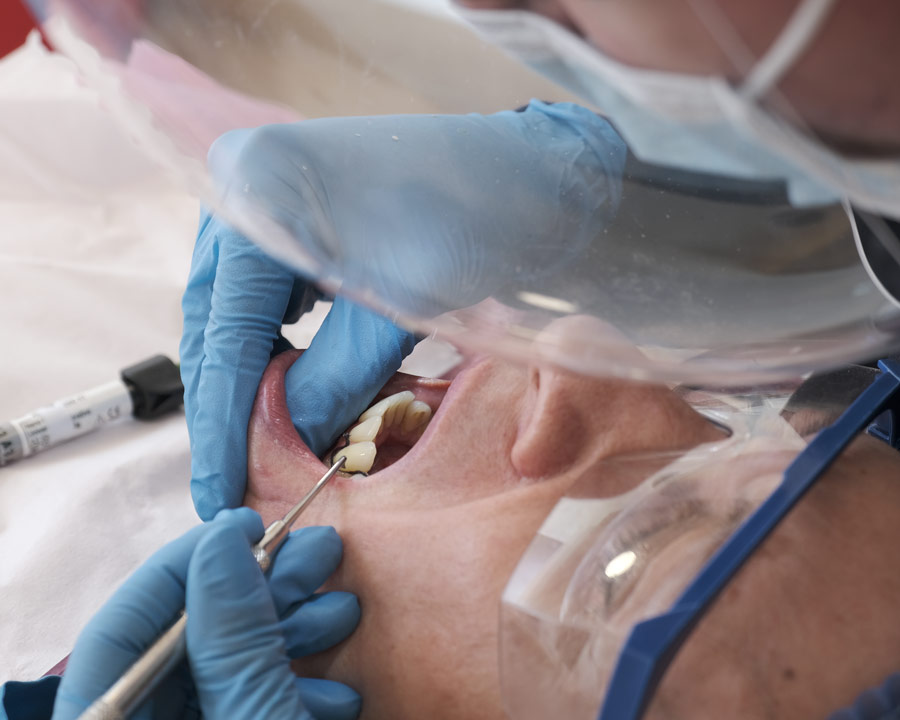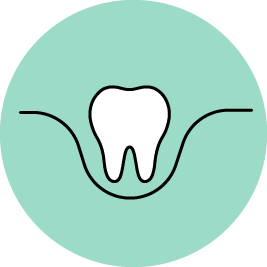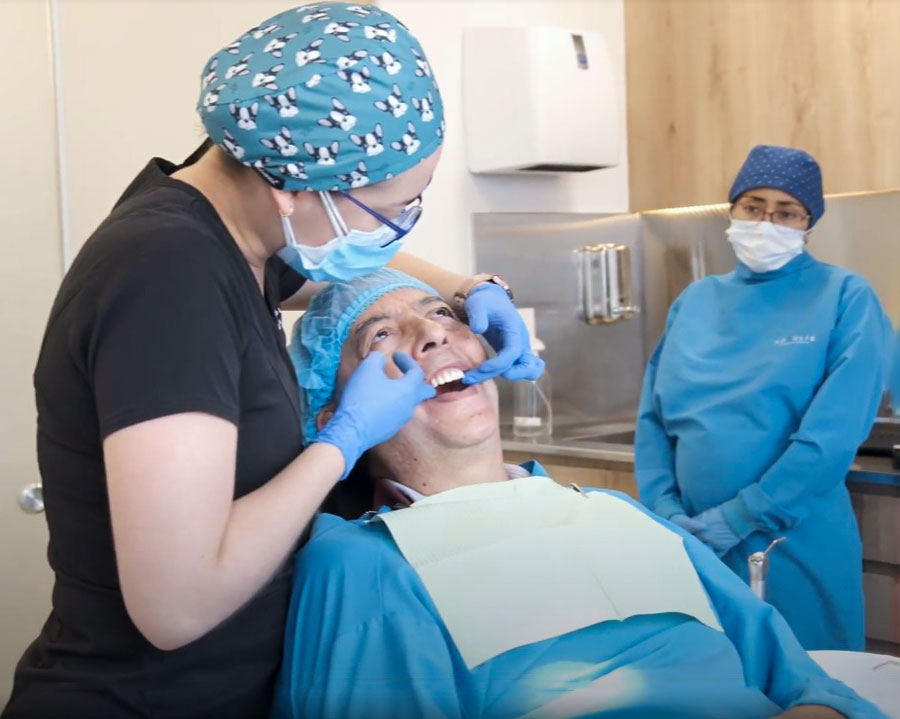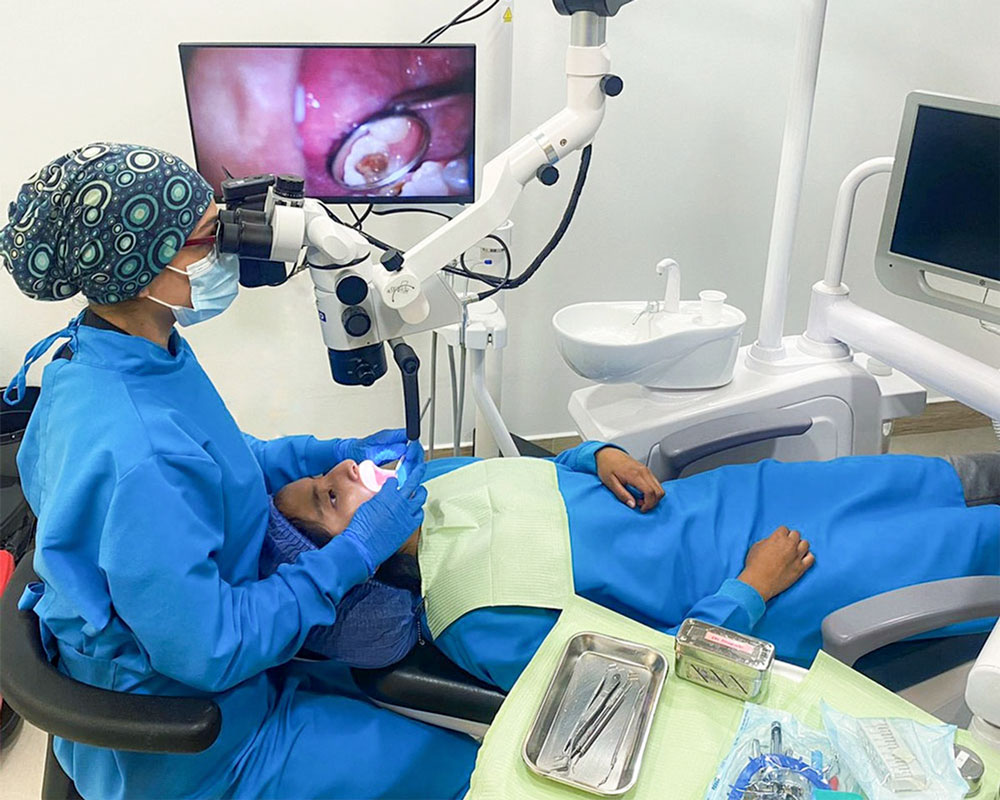
Periodoncia
Cuida tus encías, es el tejido más importante para proteger tus raíces de los dientes. Si no te tratas rápido, se va a generar una enfermedad periodontal grave y puede afectar a tu salud en general.

Dra Ana Ospina
Periodoncista

¿Qué es la Periodoncia?
Es una especialidad que trata las enfermedades que afectan a las encías y estructuras de soporte de los dientes. Esta rama de la odontología es una de las más importantes, puede restaurar y tratar infecciones de toda índole en las encías, conservando la estructura principal de soporte de los dientes.
¿Qué es la enfermedad periodontal?
¿Por qué se presenta la enfermedad periodontal?
¿Cuál es el procedimiento de la Periodoncia?
Tipos o fases de enfermedades periodontales
1. Gingivitis
La gingivitis se define como la inflamación de las encías, puede ocurrir por acumulación de placa o puede darse por una manifestación de una enfermedad sistémica. La gingivitis es reversible después del tratamiento óptimo y guiado por un especialista.
2. Periodontitis
La periodontitis es una enfermedad inflamatoria crónica, que conduce a la pérdida del aparato de sostén del diente, es decir, pérdida de encías y la pérdida de hueso. Se clasifica en periodontitis, periodontitis necrotizante y periodontitis como manifestación de enfermedades sistémicas. Dependiendo como esté la boca del paciente, esta patología puede ser reversible o en otro caso, se podrá restaurar el tejido perdido.
Preguntas Frecuentes
Existen algunos signos que nos pueden ayudar a identificar la presencia de la enfermedad, esto son: Sangrado e inflamación de las encías, donde comúnmente se pierde la anatomía o forma de la encía, enrojecimiento, movilidad y/o pérdida dental. El paciente también puede referir síntomas como incomodidad en los dientes, mal aliento y sabor metálico.
- Mediante una higiene diaria y adecuada (cepillado, hilo dental, enjuague bucal), se puede prevenir la proliferación de bacterias que pueden atacar a las encías.
- Acudir al odontólogo cada 6 meses para la remoción de cálculos y diagnóstico de enfermedades.
- En la presencia de algún síntoma dicho en la pregunta anterior, se debe acudir inmediatamente al odontólogo y prevenir enfermedades más graves.















